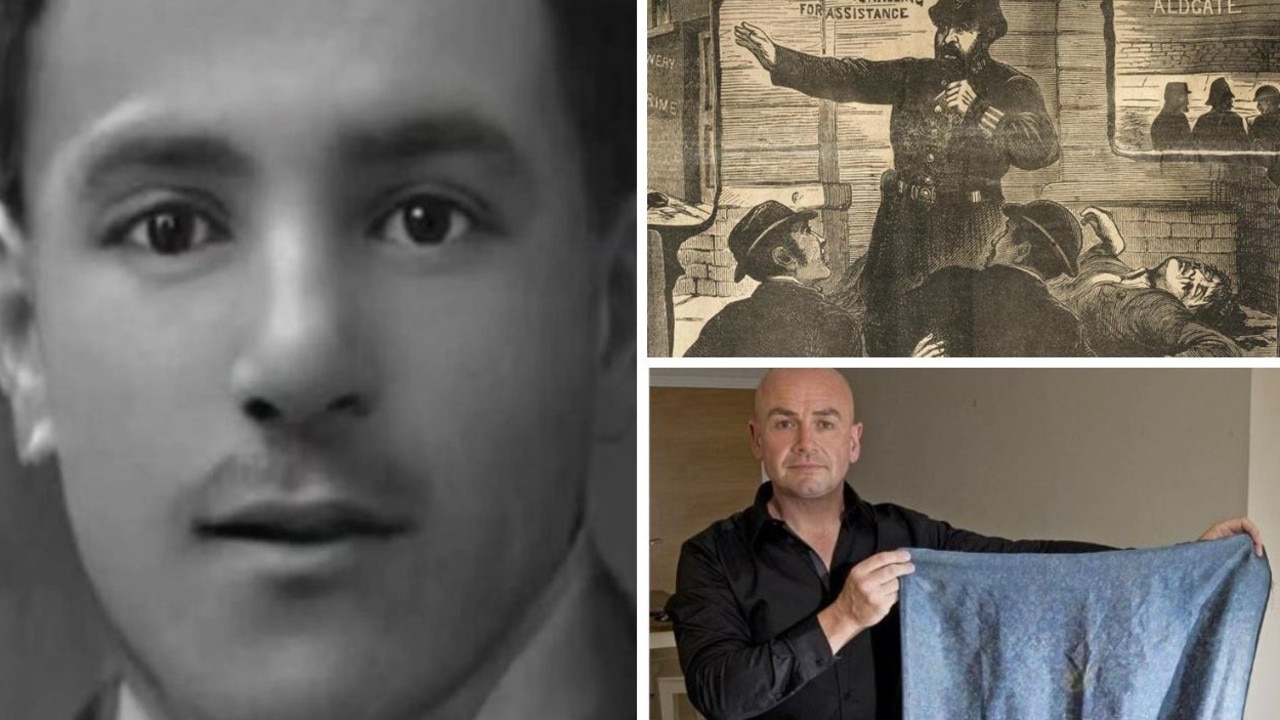Headline: After 137 Years of Mystery, Jack the Ripper’s Identity Finally Unveiled!
In a breathtaking revelation that has sent shockwaves through the world of true crime, the long-elusive identity of Jack the Ripper has been unveiled after 137 years of speculation, theories, and chilling folklore. The notorious serial killer, who terrorized London’s East End in 1888, may finally be unmasked thanks to groundbreaking DNA analysis from a shawl believed to have been recovered from one of his crime scenes.

The shawl, a silk piece that has tangled itself in the fabric of history, was purchased at auction in 2006 by businessman Russell Edwards. After years of meticulous research and forensic analysis conducted by molecular biologist Dr. Jari Luhalenan, the results are in: the blood found on the shawl has been traced back to Catherine Eddowes, one of the Ripper’s victims, while traces of semen on the fabric matched the DNA of Aaron Kosminski, a Polish Jewish immigrant who lived in the very heart of White Chapel during the time of the murders.
This stunning announcement has reignited public fascination with the Ripper case, a narrative steeped in horror and mystery. The fog-laden streets of White Chapel, where the killer stalked his prey, are now echoing with questions that have lingered for over a century. Who was this man who plunged the world into fear and left a trail of blood in his wake? The answer now appears to be Aaron Kosminski, a figure who was institutionalized in 1891 and died in obscurity in 1919.
But while the DNA evidence presents a compelling case, the scientific community remains divided. Critics have raised concerns regarding the authenticity of the shawl’s provenance, the potential for contamination, and the limitations of mitochondrial DNA, which can only suggest familial connections rather than pinpoint an individual’s guilt. The debate over whether Kosminski was indeed the infamous killer continues to rage, with some experts calling for further peer-reviewed studies to validate the findings.
The narrative of Jack the Ripper has always been as much about the victims as the killer himself. The five canonical murders—Mary Ann Nichols, Annie Chapman, Elizabeth Stride, Catherine Eddowes, and Mary Jane Kelly—serve as a haunting reminder of the societal neglect faced by women in Victorian London. In a world where their screams went unheard and their lives were deemed expendable, the Ripper thrived, exploiting the very darkness that enveloped them.
As the fog of mystery begins to lift, the questions surrounding Jack the Ripper’s identity force us to confront not only the nature of evil but also the societal conditions that allowed such a monster to exist. Why does the story of Jack the Ripper continue to captivate us? Perhaps it is because he embodies a darkness that still resonates in our modern psyche—a chilling reminder that the line between predator and prey is often blurred.

While the name Aaron Kosminski may now be etched into the annals of history, the legacy of Jack the Ripper transcends any single individual. The fascination with this case reveals a deeper truth about humanity’s struggle with its own shadows. As we grapple with the implications of this latest revelation, we are left with a haunting reflection: the darkness that once haunted the alleyways of White Chapel still walks among us, wearing new faces, but driven by the same ancient compulsions.
In the end, while the identity of Jack the Ripper may have found a possible answer, the questions surrounding his victims and the societal failures that allowed his reign of terror to persist remain as urgent as ever. The fog may be lifting, but the shadows of history linger, reminding us that some mysteries may never be fully solved.





